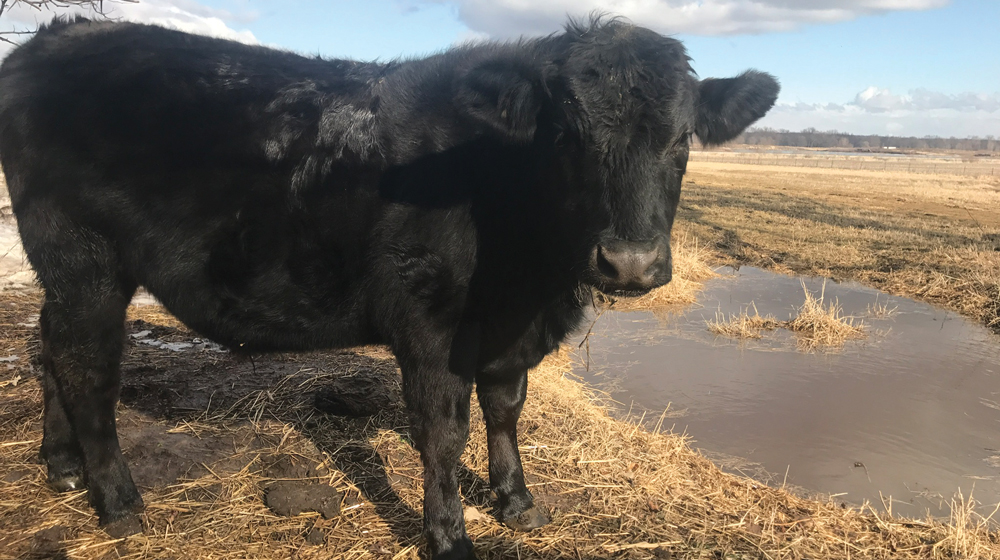At the Iowa Farm Sanctuary, every animal has a story

Iowa Farm Sanctuary Open Barn Days
Visit every Sunday during the spring and summer between 12-3 p.m.
$10 donation for adults, $5 donation for kids
For many Iowa natives, farming and eating animals isn’t only the norm, it is a way of life. But farm life is rarely peaceful for the animals themselves, particularly in Iowa’s more than 10,000 factory farms.
Iowa Farm Sanctuary is the state’s first and only vegan farm animal sanctuary. Located between Marengo and Amana, we provide care and compassion to cows, goats, sheep, pigs, chickens and ducks who have escaped their fate in the food industry.
Before opening our doors in October 2016, one of the questions we received most frequently was, “Where will you get these rescued farm animals? Farmers aren’t going to just give them to you.” Truth be told, when we set out on this endeavor, we didn’t know where our animals would come from. We just knew there were farm animals that needed a safe, forever home, and we wanted there to be one.
Almost a year after our grand opening, we had a variety of rescued farm animals who found their way to Iowa Farm Sanctuary in a variety of ways: a calf born unexpectedly on a feedlot to a heifer headed to slaughter; a turkey who walked out of a Tyson Foods plant to spare his own life; a lamb whose mother couldn’t produce milk and was found malnourished and hypothermic; and a few piglets who were saved from a massive confinement by a brave employee.
We didn’t know where our animals would come from. We just knew there were farm animals that needed a safe, forever home, and we wanted there to be one.
The circumstances can be heart-wrenching, but each animal’s story carries a message of hope.
On Sept. 15, 2017, Iowa Farm Sanctuary executed a rescue unlike any we had done before. It was an incredibly hot day and I was giving a tour of the farm to a couple of my friends when my husband Jered called. Jered alerted us that a semi hauling cattle had gotten into an accident about 40 miles south of the sanctuary. I immediately hopped into the sanctuary’s truck and headed south. I had to call on our social media team to find us a livestock trailer, as our trailer had a flat tire.
Upon our arrival at the crash, we realized there wasn’t a lot we could do on-site. The folks working the scene were cleaning up the deceased cattle — we watched as they hoisted the carcasses into a dump truck, the smell and sounds of their death surrounding us. Five or six cows had wandered off, the responders said, but after scouring the land for an hour, we couldn’t find them. We decided to shift our focus to locating the handful of survivors that had been loaded up and taken to a holding facility.
A cattle farmer responded to our call for a trailer and was ready to help us. It took us a bit of time and much frustration to find where the cattle were being held, but ultimately we found them. We made contact with the “owners” of the cattle and let them know where they would be going and that they all needed to be immediately vetted. Once they gave us the green light, we loaded the boys up and headed for home!
Through a completely horrific accident, these eight steer had liberated themselves from their fate of becoming someone’s dinner. They were visibly shaken and had extensive injuries. Three of the eight ended up succumbing to their injuries, and they were humanely euthanized and cremated. The surviving five — Frank, Django, Tucker, Rocco and Max — now serve as ambassadors to their species, scars and all. Their eyes tell a story to all who visit, and to those who will take the time to listen.
Shawn Camp is one of the founders of Iowa Farm Sanctuary. To donate money, sponsor an animal or make a purchase from the sanctuary’s Amazon wishlist, visit iowafarmsanctuary.org. To learn more about the highway cattle rescue, check out Bite Size Vegan’s documentary “Alive By Accident” on YouTube. This article was originally published in YogaIowa’s Spring 2018 issue.


